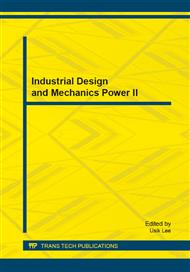p.798
p.803
p.807
p.811
p.817
p.823
p.829
p.834
p.840
Investigation into Spatial Sensitivity of Probe-Type Electrostatic Sensors for On-Line Condition Monitoring of Heat Engines
Abstract:
Probe-type electrostatic sensors provide a novel and applicable way to realize on-line condition monitoring of heat engines. However, researches on this type of electrostatic sensors are still scanty, especially needs more detailed studies for the sensors sensing characteristics. In this paper, a simulative 3-D model with high fidelity was established using COMSOL, by which a detailed research on probe-type electrostatic sensors spatial sensitivity was conducted, the whole spatial sensitivity distribution on the centre section and conclusions about the influencing factors of spatial sensitivity were acquired. The simulative results were confirmed by experiments, and can be used for optimal design of probe-type electrostatic sensors.
Info:
Periodical:
Pages:
817-822
Citation:
Online since:
October 2013
Authors:
Price:
Сopyright:
© 2013 Trans Tech Publications Ltd. All Rights Reserved
Share:
Citation:


